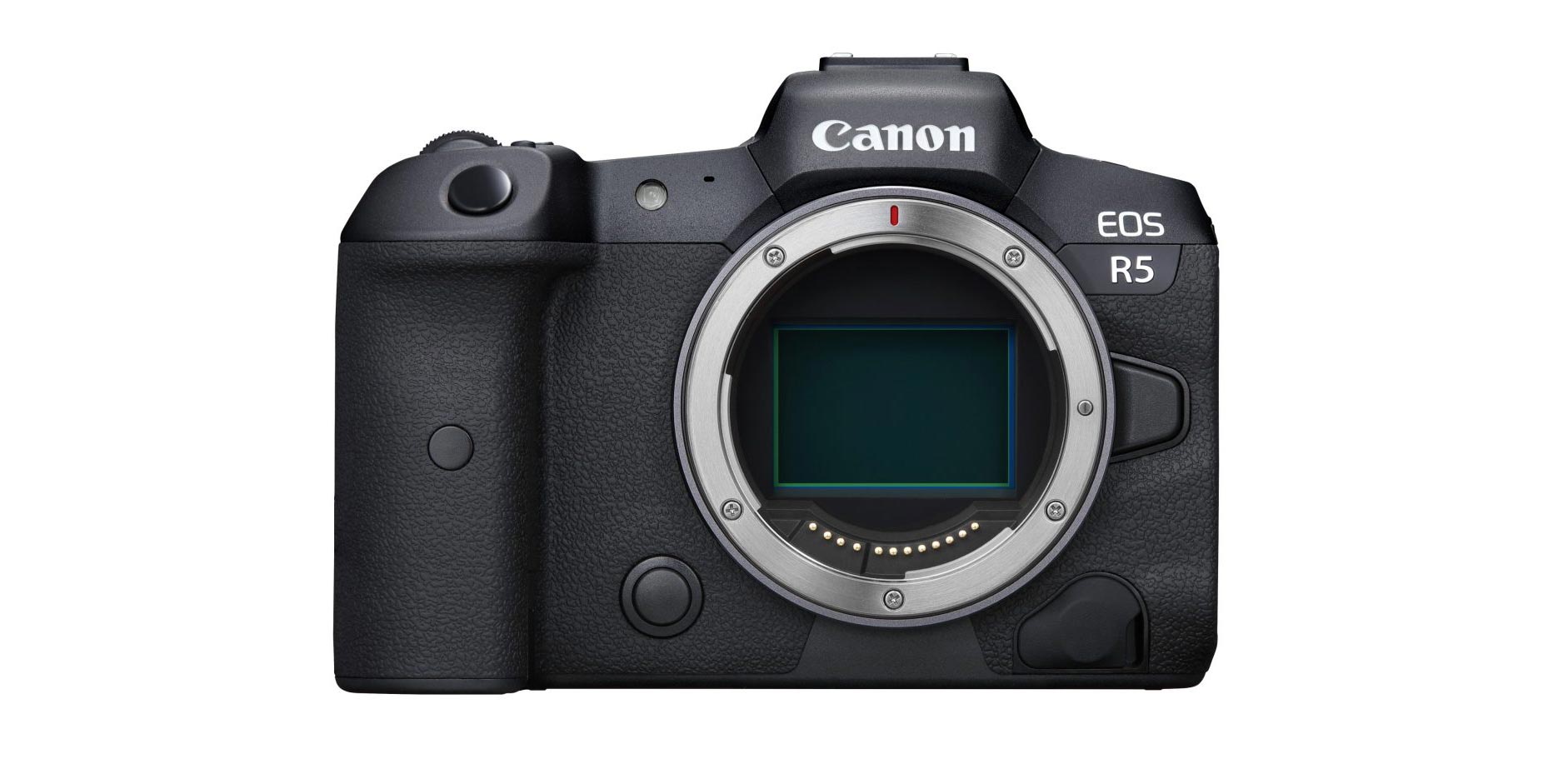Canon launched the EOS R5 and R6 cameras this past Thursday, the latest iterations in its full-frame mirrorless line. The R5 will take the top spot with a 45MP sensor, some incredible video specs, increased EVF resolution, higher still image frame rates, and a beefier magnesium-based build. The R6 will most likely eclipse the almost two-year old EOS R in terms of technology and some video features though the R remains higher in resolution (30MP vs 20MP) and it offers some video configurations which the R6 does not like All-I internal recording.
Despite their differences in resolution, the R5 and the R6 share many features including the newest version of Canon’s Dual-Pixel Autofocus (DPAF), Canon’s first generation in-body image stabilization (IBIS), and fast frame rates for still image capture. 12 fps with the mechanical shutter and 20 fps with the electronic shutter. They both the EOS R5 and the R6 look to be great cameras. The R5 is the more video centric of the two with recording resolutions up to 8K in RAW along with C-log, All-I and IPB options. The R6 will likely be a bit better at high ISO because of its larger pixels and be less demanding in terms of postproduction due to its 20MP still images and its more compressed internal video recording (IPB only).
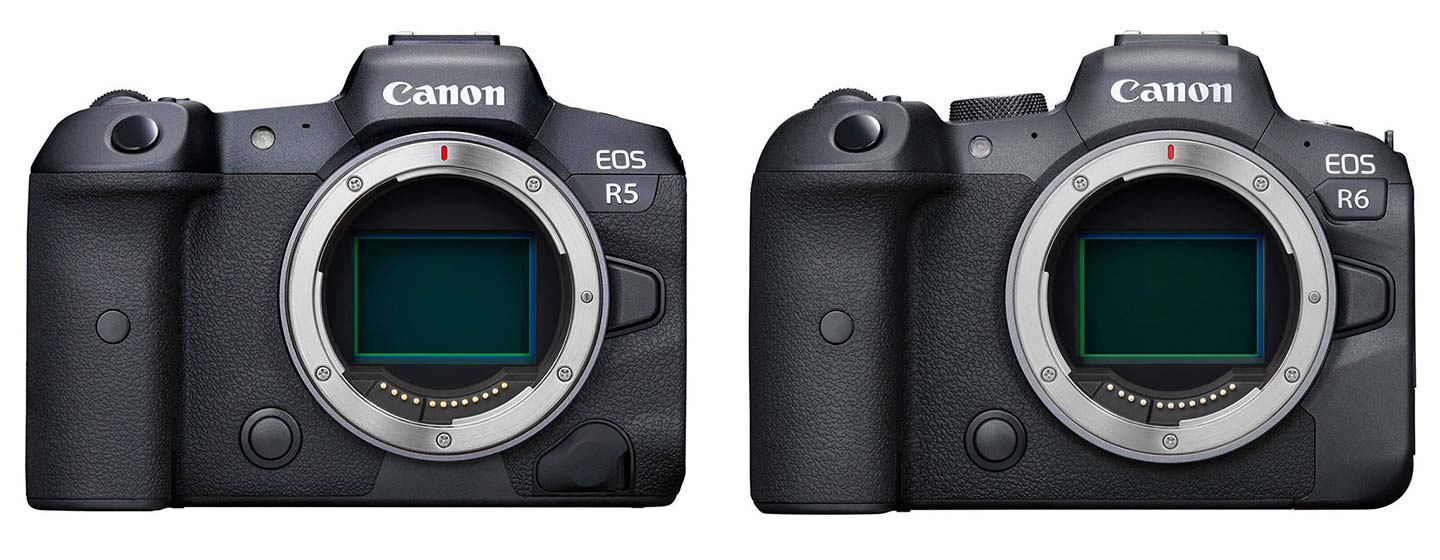
I’m not going to go any deeper into the new cameras’ specifications but there is a lot more. I encourage you to visit Newsshooter.com’s R5 and R6 previews for more information.
My intention here is to add my thoughts on the R5 from the perspective of a seasoned professional, one who shoots both video and stills, and someone who standardized on the EOS R for stills and video use. The video use was in combination with Cinema EOS cameras or using the EOS R on its own as both A and B-cameras.
***I have added initial notes about my firsthand experience using the R5 on projects at the end of this article.***
The EOS R: The Review I Never Did
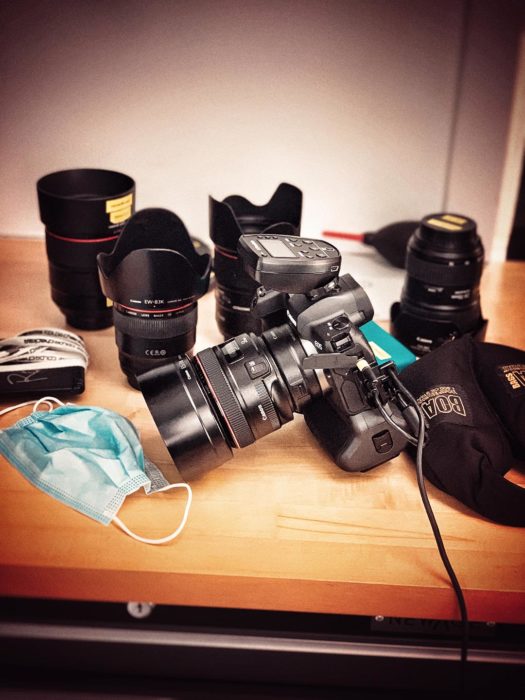
The EOS R was launched in October, 2018, as Canon’s first full-frame mirrorless camera. It came with a new lens mount, called the RF, which has a wider diameter and a shorter flange distance than Canon’s decades old EF mount for its DSLR line. This change allows Canon more flexibility in designing the native mount RF family of lenses while maintaining compatibility with older EF glass through the use of EF-RF Mount Adapters.
Prior to getting the EOS R I had dual camera lineup for photography comprising two cameras. The Canon 5DS R, a 50MP camera, for high resolution capture. It was well suited to architecture projects, magazine spreads and covers, and advertising imagery. And the Canon 1DX Mark II, a 20MP camera, for portraits and documentary style work. The latter is also a very capable video camera.
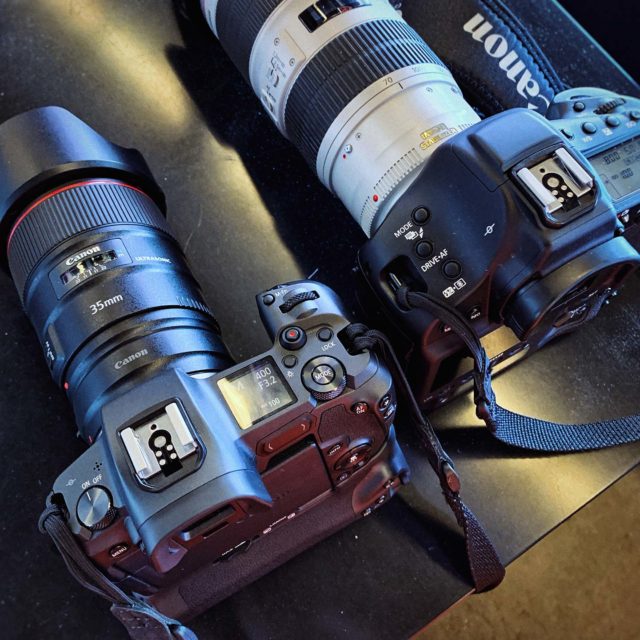
When I got my first EOS R in the fall of 2018 I treated it as a video camera taking advantage of its small size, its 1080 & 4K capture in C-log, and running it as a gimbal based B or C-camera on projects. It worked extremely well in that role sitting alongside my cinema cameras, always at the ready to grab and go as needed.
Executive Education promo on YouTube. The Canon EOS R as a B-camera intermixed with Canon C300 Mark II footage. New York, NY. October, 2018.
In terms of video, the EOS R is punches well above its weight. It is limited to 4:2:0 8-bit when recording internally but its high data rates set it apart from most other mirrorless bodies. At 480Mbps for 4K and up to 160Mbps for 1080 the files can be worked in post without fear of them immediately breaking apart. The Canon 1DX Mark II in comparison can record internally in 4:2:2 10-bit in 4K DCI and its files arguably have a bit more mojo but its lack of a log format, its bloated file sizes, its physical size and weight, and its lack of an articulated screen all kept me choosing the EOS R over it. The EOS R is a far more user friendly camera for filming video.
The EOS R can match the 1DX Mark II’s 4:2:2 10-bit when you record out via HDMI to an external recorder but I found that in practice, once I graded the clips, I could see very little difference between the EOS R’s internal 4:2:0 8-bit and its external 4:2:2 10-bit. I chalk that up to the R’s high internal data rates.
Together We Celebrate on YouTube. A project with the Canon EOS R as A-camera and the Canon C300 Mark II as B-camera. Princeton, NJ. November, 2018.
I should note, too, that I do not own any RF mount glass. The RF lens line has gotten stellar reviews and in truth I’m quite jealous of it but since I produce a lot of video with the EF mount Canon Cinema EOS line it hasn’t made sense for me to invest in RF glass. Plus, there are two reasons one can stick with EF glass on an RF mount mirrorless body and both are tied to Canon’s EF-RF Mount Adapters.
First, Canon’s RF-EF Mount Adapters are great. They work seamlessly as an interface between an EF lens and the RF mount body. They are small and light and they work so well that it is almost like they aren’t there. Third-party lens adapters have a history of firmware issues and creating performance problems between the lens, the lens mount, and the camera body. Not so Canon’s EF-RF Mount Adapters. They are 100% reliable and they maintain autofocus performance virtually on par with Canon’s RF lenses. In fact, I think the EF glass often works better on the EOS R bodies with the adapters than it does on EF mount bodies.
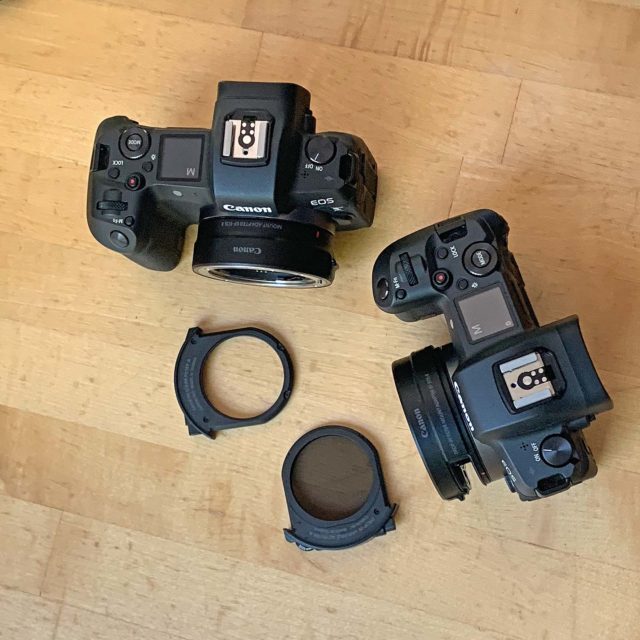
I say “they” when referring to the EF-RF adapters because Canon has made three versions of them. A simple EF-RF Mount Adapter, a EF-RF Drop-in Filter Mount Adapter with an integrated filter slot, and a EF-RF Control Ring Mount Adapter with a programmable control ring similar to the one found on RF lenses. I own the first two of those three versions.
The EF-RF Drop-in Filter Mount Adapter with the built-in filter slot is my second reason for not rushing to invest in RF glass. When coupled with Canon’s Vari-ND filter it gives the camera the equivalent of a built-in ND system. ND is Neutral Density and the Vari-ND is a variable neutral density filter with a range of 1.5-9 stops.
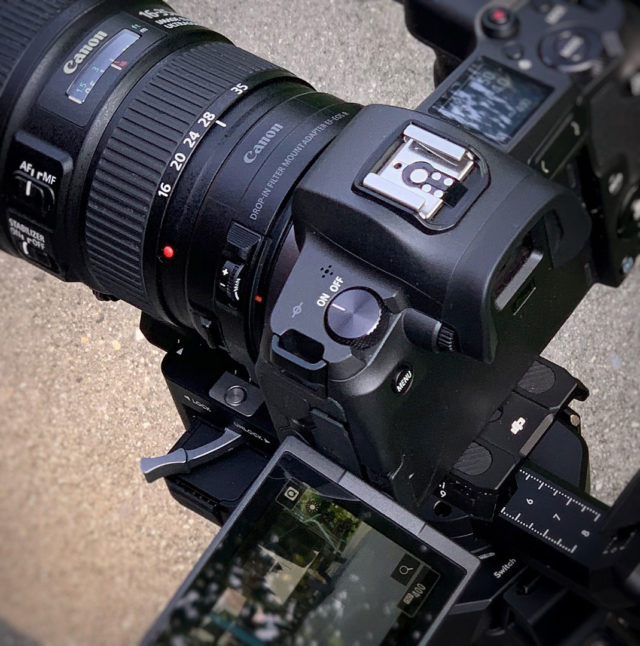
This is a huge plus for video work. Since the filter sits in the adapter behind the lens you don’t need to screw-in ND filters on the front of a lens and you do not need to swap filters when you swap lenses. The Vari-ND is always there sitting behind the lens. It’s a great system and in many ways it makes filming video with EF mount glass on the R line of cameras preferable to using RF mount lenses.
To sum up: the EOS R’s high bit-rate internal recording, its log option, its dual-pixel autofocus, and its vari-ND along with the camera’s size and weight really sold me on using it for video. It records great 1080P and 4K. The only negatives are that the 4K does have some rolling shutter, codec and frame rate options are limited, and it records in 4K at about a 1.75x crop.
In use, I never had an issue with the rolling shutter in 4K even when running the camera on a gimbal. The 1.75x 4K crop created a huge Internet backlash when the camera was introduced but it is close enough to Super 35’s 1.6x crop that I found I could live with it. Especially, since I mainly used the EOS R as a B-camera or C-Camera to my Canon C300 Mark IIs with their Super 35 sized sensors.
44 North Coffee on YouTube. The Canon EOS R as A and B-camera. Stonington, Maine. September, 2019.
The video conquered I set about testing the EOS R to see if it was up to professional standards for photography. I did head to head tests comparing it to the 5DS R and the 1DX Mark II and in so doing I found that it beat both on color fidelity, dynamic range, and the malleability of the image files. By malleability I mean the amount I could push/pull the files in post. The EOS R files really let you dig into the shadows in a way in which the files from neither of the older DSLR cameras ever tolerated.

In terms of resolution, the EOS R at 30MP sits between those other two cameras. It easily bests the detail of the 20MP 1DX Mark II and its files are so much cleaner than the 50MP 5DS R’s that when coupled with some judicious use of Capture One to process the RAW still image files the EOS R can equal that camera as well.
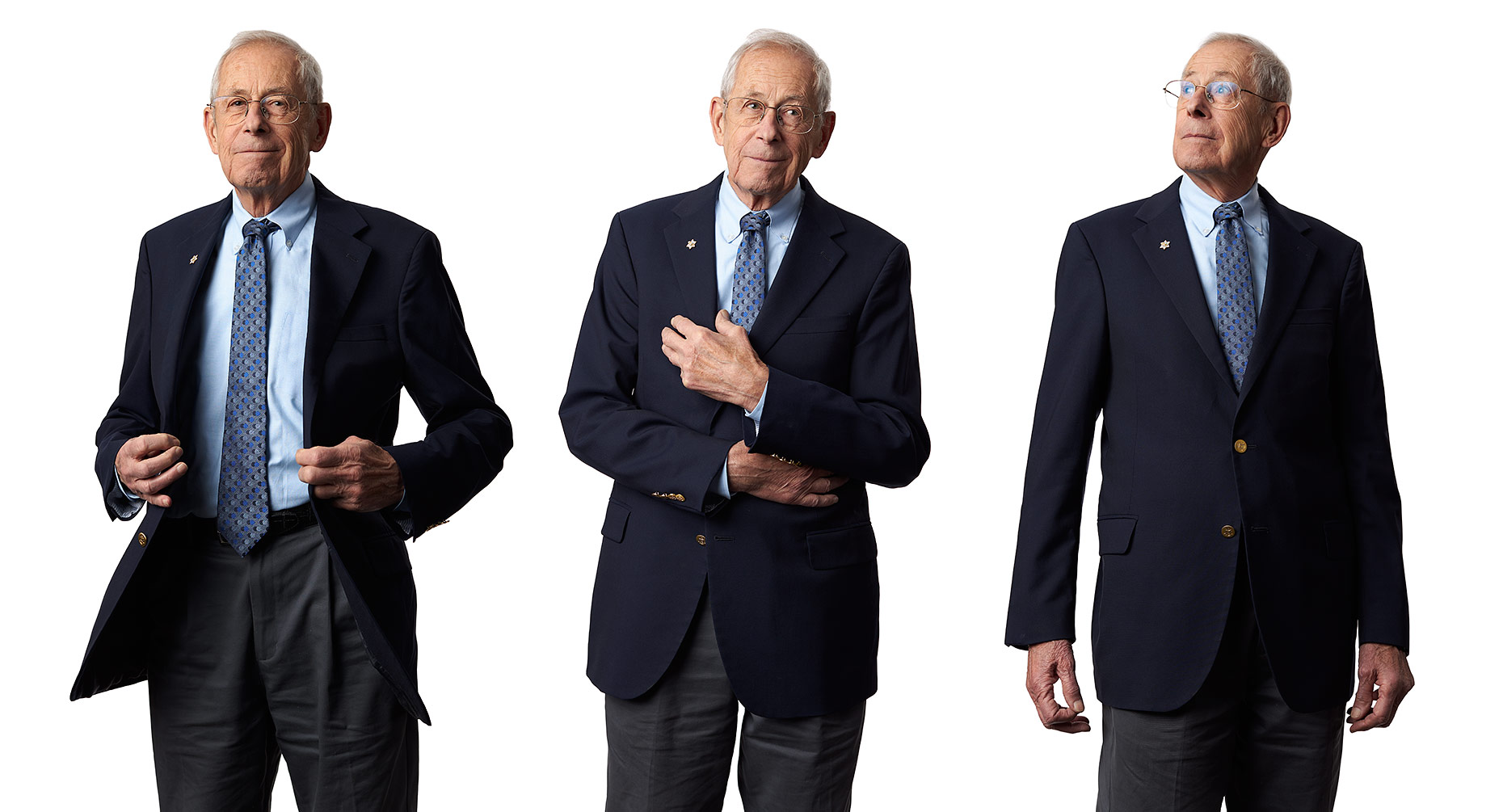
After doing those tests I sold my 5DS R and my 1DX Mark II. I got a second EOS R and I didn’t look back. I have put my EOS Rs to work on a range of editorial, advertising, and architecture photography projects. The only addition I made to the kit was to get the battery grips for the cameras to give each a bit more heft and to make them more reminiscent of a Canon 1D series body with vertical grips and controls for portrait style shooting.

Looking Ahead – The EOS R5
The EOS R5 addresses what I see as the biggest issues of the EOS R.
Build quality: the R5 adds a magnesium frame and the weather resistance of Canon’s 5D series. All good. I never had an issue when working with the EOS R but it is wanting especially if you are used to the build quality of Canon’s professional 1D and 5D series cameras.

EVF: the EVF on the EOS R could be a bit jumpy at times between frame captures and its resolution is a touch on the low side. The R5 bumps the EVF resolution up to 5.76 million dots from the R’s 3.69 million dots. Canon also says that the viewing experience with the R5 should be noticeably smoother. This should reduce eye strain and be helpful on long shoot days.
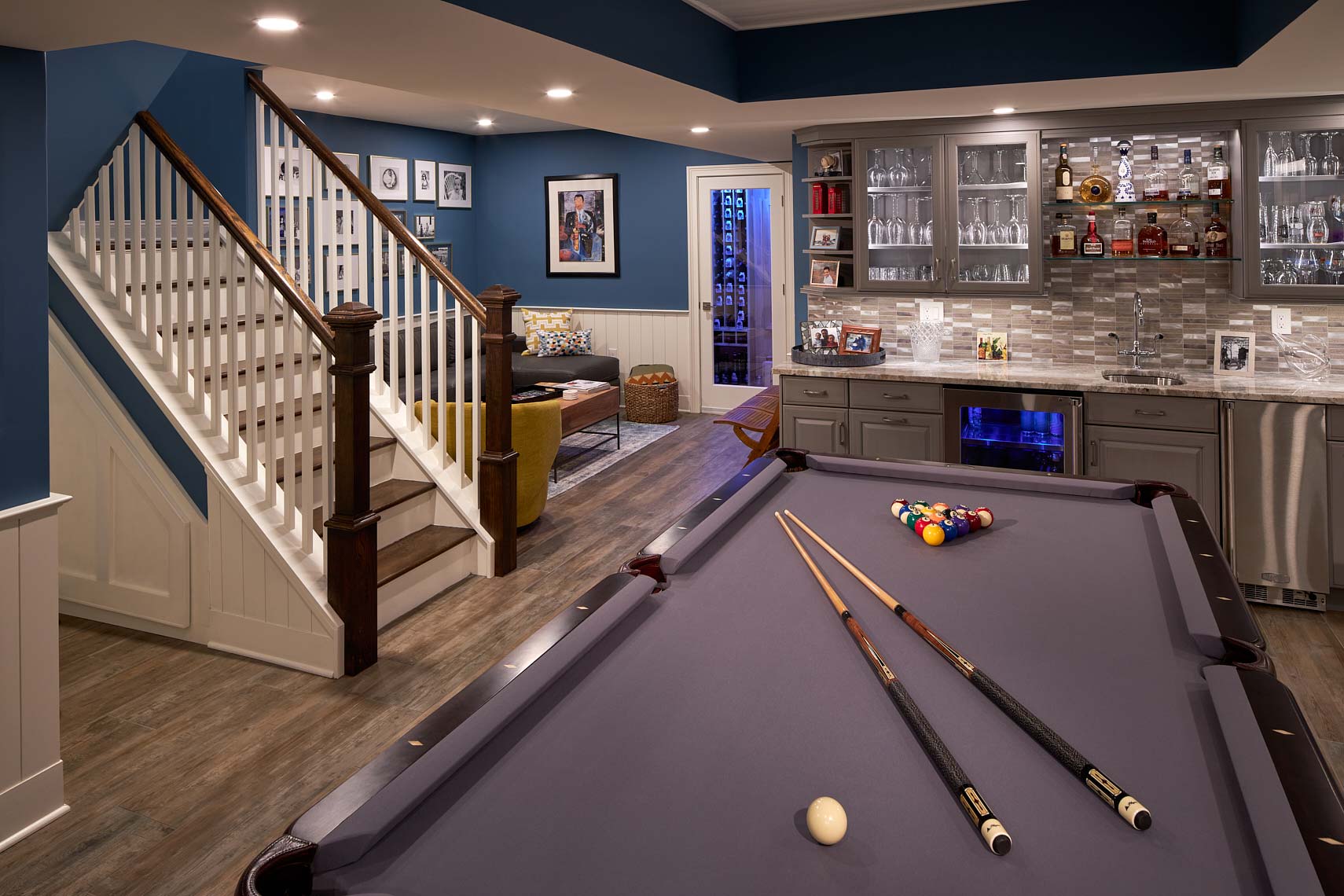
Autofocus: Canon’s Dual-Pixel Autofocus on the EOS R improved over time through firmware updates. It went from being above average to being very good but it continued to have room for improvement. One example, eye-detect could be amazing but it was inconsistent. Glasses, hair/beard styles, skin color could trip it up. There was many a portrait project where I had to turn off eye-detect and switch back to manually selecting the focus points.
The EOS R5 comes with Canon’s second generation Dual-Pixel Autofocus. It is the same as what is found on the new 1DX Mark III and it is stellar. Video samples released since Thursday’s launch show it in action and being much improved. Eye-detect will no longer require the subject to be as close to the camera, the AF system will default to the subject’s head if their eyes are no longer visible, and the whole framework can even be applied to certain types of animals. In addition, the AF points now cover 100% of the screen and focus-tracking samples along with AF reliability on the R5 all look to be phenomenal.
How to Brew: Pour Over – 44 North Coffee on YouTube. The Canon EOS R as A and B-camera. Stonington, Maine. September, 2019.
Video: I have filmed a lot of video with the EOS R. As already mentioned, it became a go-to for me as a B or C-camera to my cinema cameras. On some shoots it could even fill the A-camera role. That said, to get full-frame 4K at frame rates up to 60P and to get 10-bit 4:2:2 internal recording really seals the deal. The R5 delivers on all of that and then some. It’ll do 4K up to 120P and even 8K in RAW or in log. *There are limitations on recording times, potential heat management to contend with, and the data rates/memory card usage can get significant, but to even have those options in such a small form factor is pretty amazing.
The EOS R5 also expands on the EOS R’s time-lapse capabilities. The EOS R can create in-camera 4K time-lapses at the same high data rate it films 4K video, 480Mbps. This produces a nice beefy file which is free of artifacts and banding but like the camera’s internal recording it is limited to the 4:2:0 color space. The time-lapse mode on the EOS R also has no log option. The R5 expands the time-lapse capability to resolutions up to 8K in the larger 10-bit 4:2:2 color space and it has a log option.
The Empire state Building in Orange and Red on YouTube. Time-lapse clips created in-camera in a Canon EOS R and edited together in postproduction. New York, NY. November, 2019.
This article concentrates on the new EOS R5 in relation to the Canon EOS R. I don’t discuss the R5’s sister camera, the Canon EOS R6, in any depth and by that I don’t mean to imply that it is not a viable option. It is and that it shares so many of the R5’s improvements is wonderful. It may be a good or better fit for you but you’ll need to dig into the specs of each to make that determination.
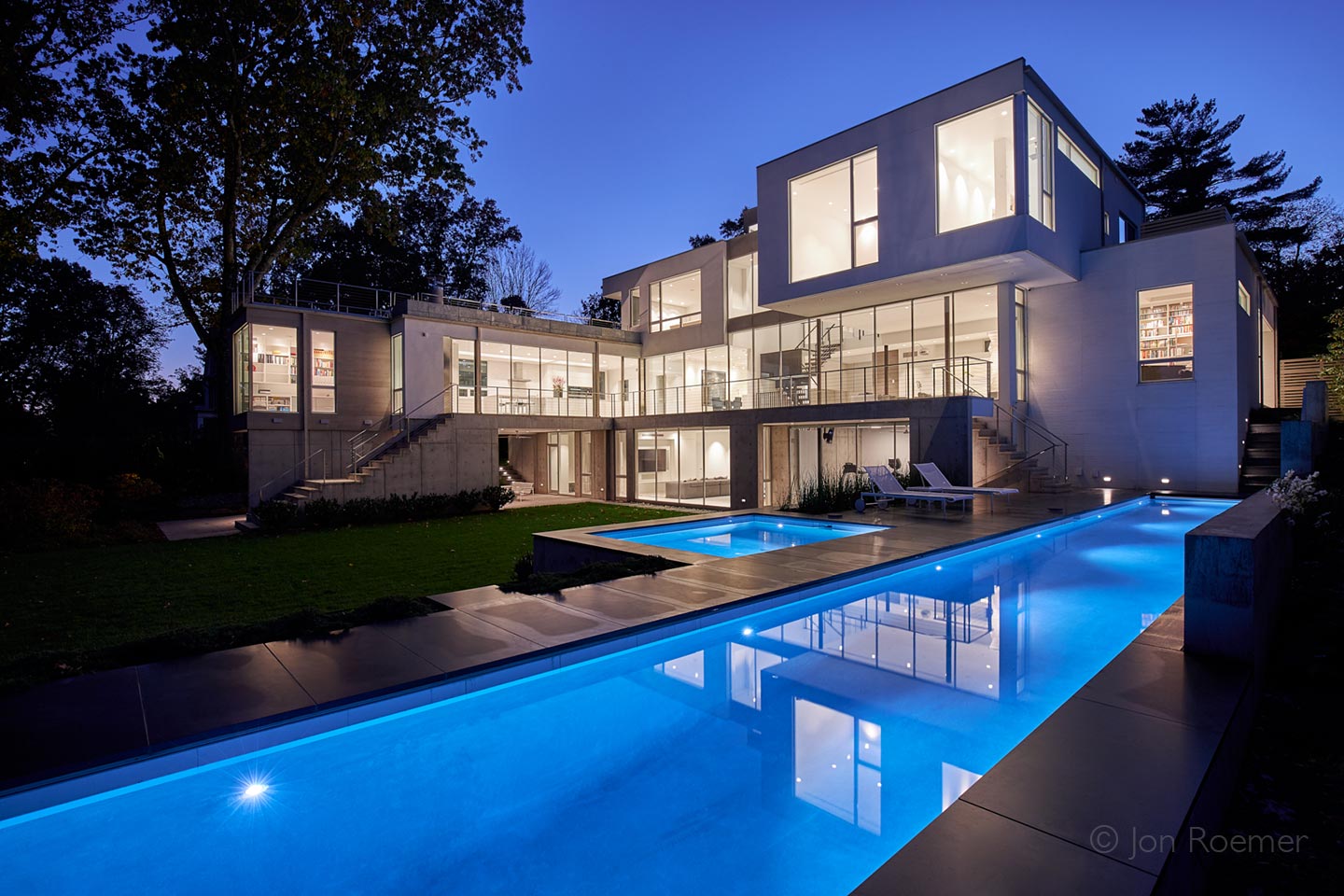
When the EOS R was released it was met with some acclaim and some yawns. Canon historically has tended to underwhelm with the specifications of its cameras but then over deliver on their build quality and usability. The buzz at the time of the EOS R’s release was that the RF lens line looked amazing but that the EOS R only hinted at what might come. The hope was that Canon would deliver a more professional body, one to match the RF lenses.
The R5 looks to be that camera. Time will tell but the fact that the EOS R has been so capable in its own right bodes well for the new R5.
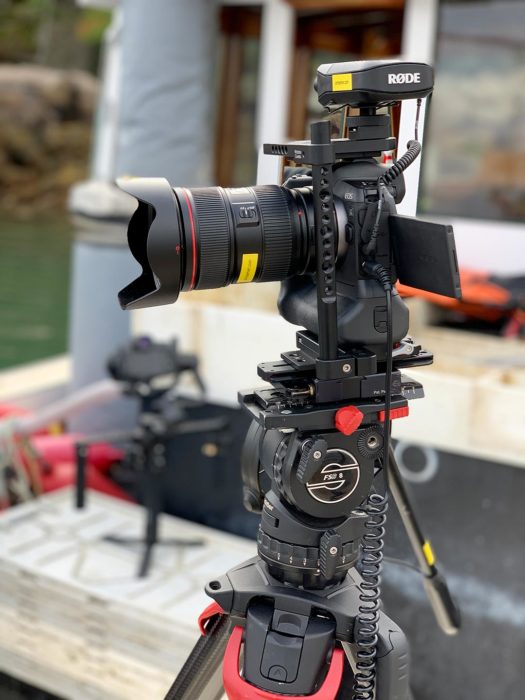
—
*In the short time since the EOS R5 was announced the camera interwebs have been in a tizzy over Canon’s video specifications for the camera as they relate to the camera’s heat management. Canon issued a statement today to clarify its recommendations.
In a nutshell, the camera will limit recording times for its more data intensive recording modes and/or frame rates to prevent the camera from overheating. These primarily include 8K RAW and 4K 120P with 20 minute and 15 minute recording times respectively (at room temp). It may also affect some of the modes which apply oversampling as opposed to pixel binning. The former is more detailed and sharper (the Canon C500 Mark II oversamples its 4K mode from 5.9K and the files are incredible), the latter a bit softer and less detailed. The time limitations for the oversampled modes due to heat already meet or exceed the camera’s actual recording window of 29 minutes 59 seconds.
It is important to understand that the ambient temperature will play a role along with if the camera is idling between clips. Both can potentially add to the camera’s internal temperature. That said, the need for extended 8K RAW shooting or 120P 4K is normally extremely limited. The former because of the huge amount of data involved, the latter because high frame rate for slow motion is usually recorded in very short bursts often of less than one minute. Put another way, 120P 4K for 15 minutes of record time is 1 hour of footage when it is retimed to 29.97 in the camera and it is 1.25 hours of footage if you retime that to 23.98 in postproduction.
Is this an issue? Is this something you can work around? I expect that it will not be an issue especially if you know the camera’s limits. Much will depend on how you plan to use the EOS R5 and in what environmental conditions.
Personally, I’m looking at the camera as a potential 4K 10-bit 4:2:2 23.98 oversampled Log format video workhorse. If I need higher frame rates or RAW video it will be infrequent and for very short time frames. In that scenario it should be more than fine.
In terms of video, I want the EOS R5 to be a camera which can fly under the radar when I’m working in public spaces, I want it for small footprint projects where I may be working on my own, and I want it to act much like how I use my EOS R now. As a B or C-camera to my C500 Mark II or sitting on my Ronin-S gimbal at the ready for grab and go b-roll.
The EOS R5s currently out in the world are preproduction units. So, I would not jump to any conclusions based on Internet chatter or YouTube videos. More will be known within the next few weeks when production cameras become available and independent reviews can be conducted.
—
Update 10/16/20: I have received my R5s and I began working with them a few weeks ago. Image quality for both video and stills has delivered! It is superb.
Canon has implemented two firmware updates for the R5 since the article above was written. Both have dealt with the camera’s internal heat management especially when it comes to shooting video.
On a recent project, I used the R5 as a B-cam to my C500 Mark II. The R5 lived on a Ronin-S gimbal for the shoot. It was used over about five hours, creating 90 clips, with about 40 minutes of total record time. The camera was in Clog 4K 10-bit 422 HQ/Fine mode. This is the higher-quality over-sampled 4K mode.
- I experienced no heat related issues whatsoever with the R5. The potential run time always showed between 15 and 25 minutes.
- The files look incredible!
- The color match between the R5 and the C500 Mark II is spot on.
- I only used one battery in the R5 and it still had about ⅓ of its power left at the end of the project. The camera was not left on continuously for five hours but was on for a good portion of it.
—
Update 01/06/21: Continued use with the R5 has shown it to excel at everything I have thrown its way. Portraits, architecture, and video projects.
A recent video project entailed two 10-hour days with the R5 as A Cam. It had over 400 clips created varying in length from ~20 seconds to 90 seconds. All in 4K 10-bit 422 HQ/Fine mode and production was buttery smooth. I relied on the camera’s DPAF eye-tracking and there were no issues nor any downtime due to the camera’s heat management.
—
You can find my EOS R5 posts and content here.
